Spit bug, spittlebug, froghopper. They’re all the same insect that produces the globs of spit-like froth on stems of grasses, flowers and shrubs this time of year.
While the spittlebug (also spittle bug) may be well-known for its spit, it isn’t as well known for its jumping capabilities. The name froghopper is well-suited for the most powerful jumping insect, though the frog part comes from its head resembling a frog.
Froghoppers can accelerate in less than one millisecond to velocities of 10.5 mph which is ten times faster than a flea. Adult froghoppers can jump up to 27 inches vertically and up to 100 times their body length (which is approximately 1/8 to 1/4 inches). The human equivalent would be jumping over the Gateway Arch in St. Louis.
Jumping insects need more than standard muscles to release large amounts of energy in a short amount of time which is why humans cannot jump over the Gateway Arch. Froghoppers have a unique combination of protein and cuticle in a bow-like structure (pleural arch) in their thoracic skeleton that acts like a catapult.
One study compared the froghopper’s jumping capabilities to an archery bow. Just like a full drawn bow ready to launch an arrow, a froghopper’s ‘bow’ stores energy for an explosive jump.
Energy is stored in ‘springs’ of cuticle and protein using slow muscle contractions. Upon takeoff, the ‘springs’ recoil quickly for an explosive jump. The ‘bow’ can send the insect forward at a force of 400 times its body mass.
Froghoppers can jump repeatedly because the elastic nature of the protein allows the muscle to return to its original shape after each jump. Then the muscles store energy again.
Only adult froghoppers have this amazing jumping capability because nymph froghoppers don’t have a fully developed ‘bow’.
Besides, the nymphs spend all their time in the froth they produce, from right after they hatch until they become an adult. Once an adult, they leave the froth behind and jump between plants.
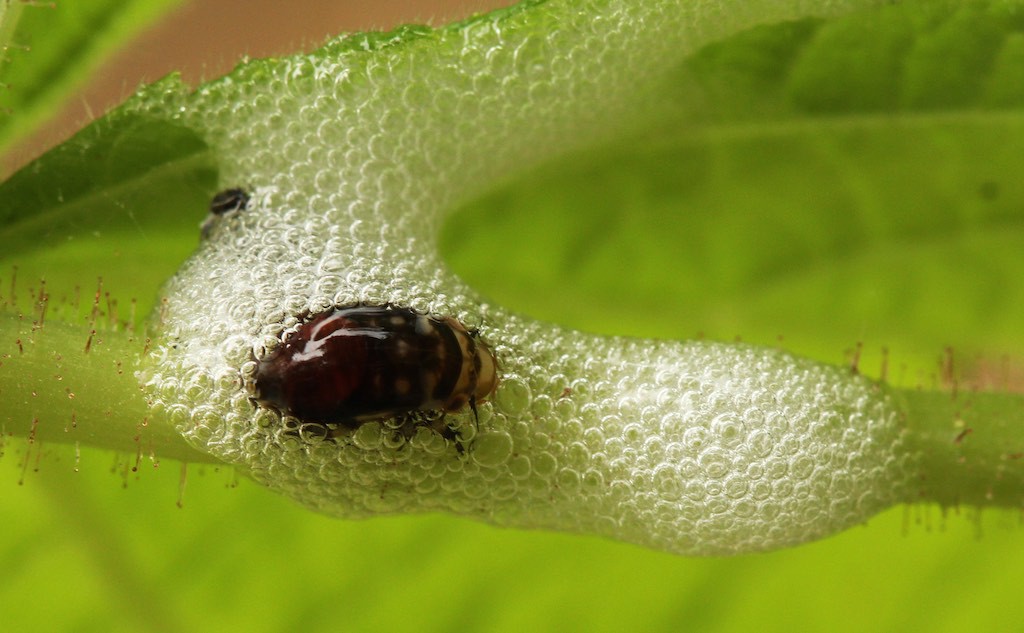
The froth isn’t actually spit–it is more akin to urine. To produce the froth the nymph secretes a liquid and simultaneously moves or pumps its body to create bubbles. Then it uses its hind legs to cover itself in the froth.
While in the froth, the nymph pierces the plant stem and drinks the sap. Any excess sap consumed is excreted and turned into more froth.
The froth serves several purposes: it protects the nymph from predators and parasites, it insulates the nymph against heat and cold and it helps prevent the nymph from drying up.
Spittlebug nymphs are tiny, from one to five millimeters long, making the smallest ones difficult to find in the froth. Even as adults, spittlebugs are hard to find because they hide during the heat of the day. During the mornings and evenings the adults drink sap from plants for energy to power their amazing jumps.

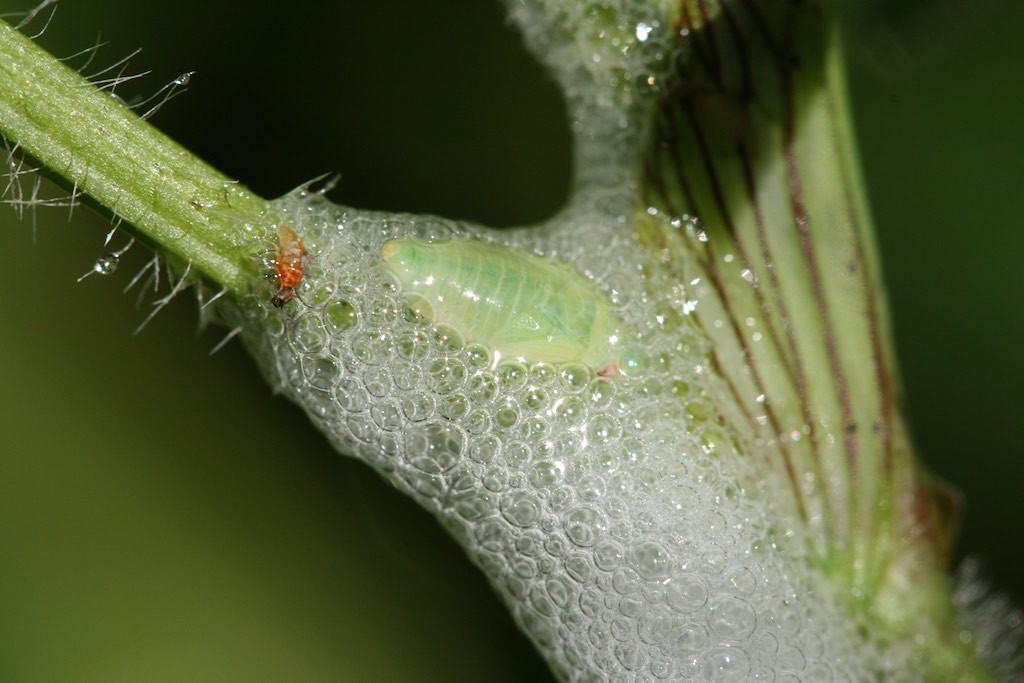
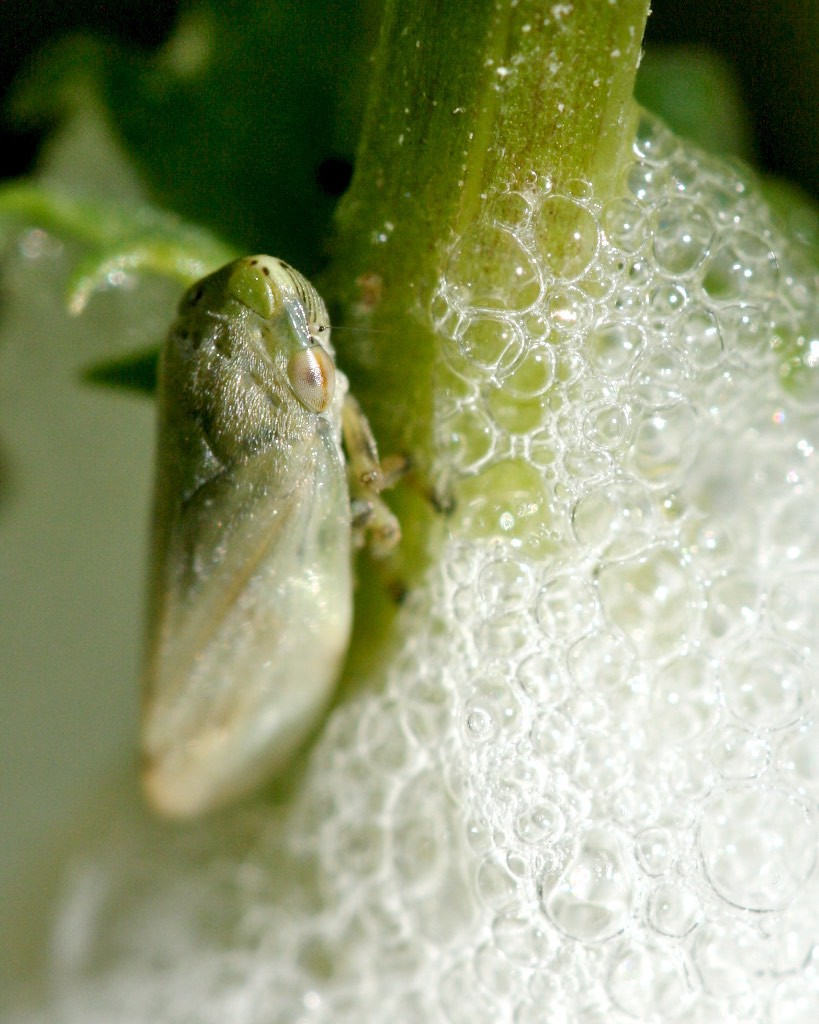
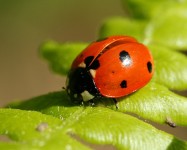
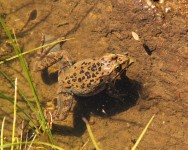
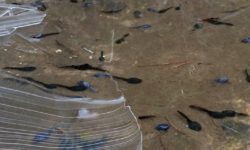

Wow, fantastic blog layout! How lengthy have you ever
been running a blog for? you make blogging look easy.
The entire look of your web site is magnificent, as smartly as the content!
You’re so interesting! I don’t think I have read through anything like
this before. So nice to discover another person with original thoughts on this issue.
Seriously.. many thanks for starting this up. This site is something that’s needed on the internet, someone with a bit of originality!
It’s in reality a nice and useful piece of information. I’m happy that you simply shared this helpful information with us.
Please keep us informed like this. Thanks for sharing.
Nice post. I used to be checking constantly this blog and I am impressed!
Very helpful info specially the closing section 🙂 I deal with such
info much. I was looking for this certain information for a long time.
Thank you and best of luck.